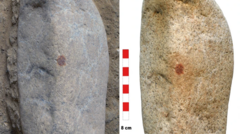For many, the phrase "bedbugs and humans" may invoke feelings of disgust, yet a recent study sheds light on a longstanding association that dates back hundreds of thousands of years. The research, detailed in the journal Biology Letters, contends that the bloodsucking bedbug (Cimex lectularius) began its relationship with humans approximately 245,000 years ago.
Initially, these insects thrived on the blood of cave-dwelling bats, but an intriguing twist occurred when they discovered the blood of early humans within their shared habitats. This shift marked the divergence of bedbugs into two distinct branches: one remained loyal to bat blood, while the other committed to feeding solely on humans.
As per Warren Booth, an urban entomology expert at Virginia Tech and the study's lead author, bedbugs have become entirely dependent on humans. “You’re not going to find a bedbug in your garden,” said Booth, emphasizing the exclusive link between the insects and their human hosts.
The human-induced environment allowed bedbug populations to flourish significantly around 13,000 years ago, coinciding with the advent of settled human communities. Despite their unpleasant reputation, bedbugs do not pose any significant health risks; they neither transmit diseases nor cause extensive harm beyond mild skin irritations.
Reflecting on this unique relationship, the study highlights the resilience and adaptability of species that have successfully intertwined their existence with humans, even if parasitically. As urban living continues to grow globally, understanding the evolution and persistent presence of these pests remains crucial for public health and urban ecology.




















